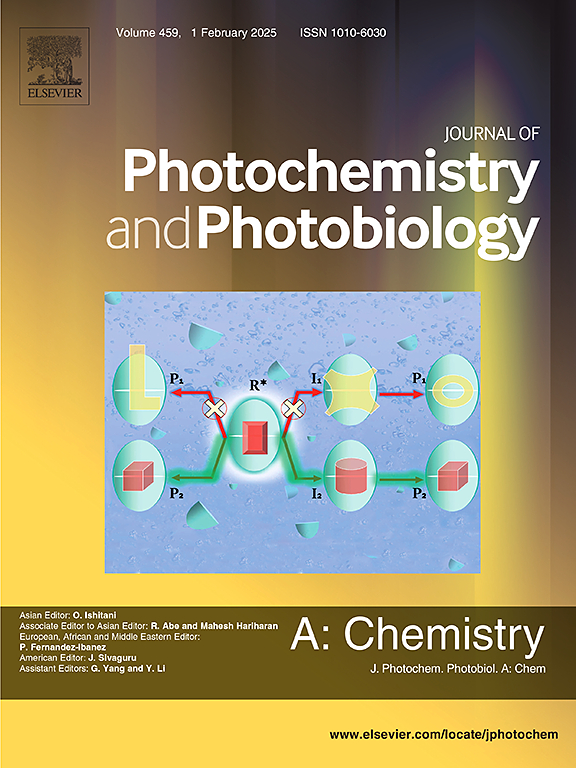Development and validation of a green spectrofluorimetric method for brivaracetam determination using N-doped graphene quantum dots: Mechanistic insights and bioanalytical applications
IF 4.1
3区 化学
Q2 CHEMISTRY, PHYSICAL
Journal of Photochemistry and Photobiology A-chemistry
Pub Date : 2025-02-23
DOI:10.1016/j.jphotochem.2025.116357
引用次数: 0
Abstract
Brivaracetam is an important antiepileptic drug, and its sensitive and selective determination in biological matrices is crucial for therapeutic drug monitoring and pharmacokinetic studies. However, the currently available analytical methods suffer from limitations such as low sensitivity, high environmental impact, and complex sample preparation. In this work, a highly sensitive and selective spectrofluorimetric method was developed for the determination of brivaracetam in human plasma and pharmaceutical formulations. The method is based on the interaction between brivaracetam and N-doped graphene quantum dots (GQDs) leading to fluorescence quenching. The quenching mechanism was investigated using density functional theory calculations, Stern-Volmer analysis and thermodynamic studies. A static quenching process was observed indicating complex formation between the analyte and nanomaterial. Different factors affecting the quenching efficiency were carefully optimized such as pH, GQDs concentration, and incubation time. The proposed method was validated according to the ICH M10 guidelines and showed excellent linearity in the concentration range of 0.1–2.5 μg/mL with a limit of detection of 0.033 μg/mL. Furthermore, the method displayed good precision and accuracy, and selectivity in the presence of common plasma/formulation excipients. Hence, the developed method was successfully applied for the determination of brivaracetam in pharmaceutical formulations as well as pharmacokinetic monitoring in human plasma samples. The “greenness”, “blueness” and “whiteness” of the proposed method was also evaluated using the AGREE, BAGI and RGB12 metrics, respectively, confirming its eco-friendly, high practicability and sustainable nature transcending the reported conventional analytical techniques, posing the developed method as a promising analytical tool for brivaracetam determination.

求助全文
约1分钟内获得全文
求助全文
来源期刊
CiteScore
7.90
自引率
7.00%
发文量
580
审稿时长
48 days
期刊介绍:
JPPA publishes the results of fundamental studies on all aspects of chemical phenomena induced by interactions between light and molecules/matter of all kinds.
All systems capable of being described at the molecular or integrated multimolecular level are appropriate for the journal. This includes all molecular chemical species as well as biomolecular, supramolecular, polymer and other macromolecular systems, as well as solid state photochemistry. In addition, the journal publishes studies of semiconductor and other photoactive organic and inorganic materials, photocatalysis (organic, inorganic, supramolecular and superconductor).
The scope includes condensed and gas phase photochemistry, as well as synchrotron radiation chemistry. A broad range of processes and techniques in photochemistry are covered such as light induced energy, electron and proton transfer; nonlinear photochemical behavior; mechanistic investigation of photochemical reactions and identification of the products of photochemical reactions; quantum yield determinations and measurements of rate constants for primary and secondary photochemical processes; steady-state and time-resolved emission, ultrafast spectroscopic methods, single molecule spectroscopy, time resolved X-ray diffraction, luminescence microscopy, and scattering spectroscopy applied to photochemistry. Papers in emerging and applied areas such as luminescent sensors, electroluminescence, solar energy conversion, atmospheric photochemistry, environmental remediation, and related photocatalytic chemistry are also welcome.

 求助内容:
求助内容: 应助结果提醒方式:
应助结果提醒方式:


